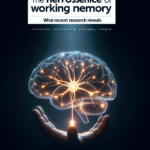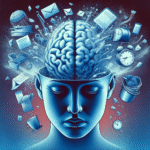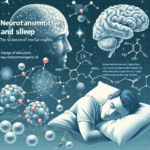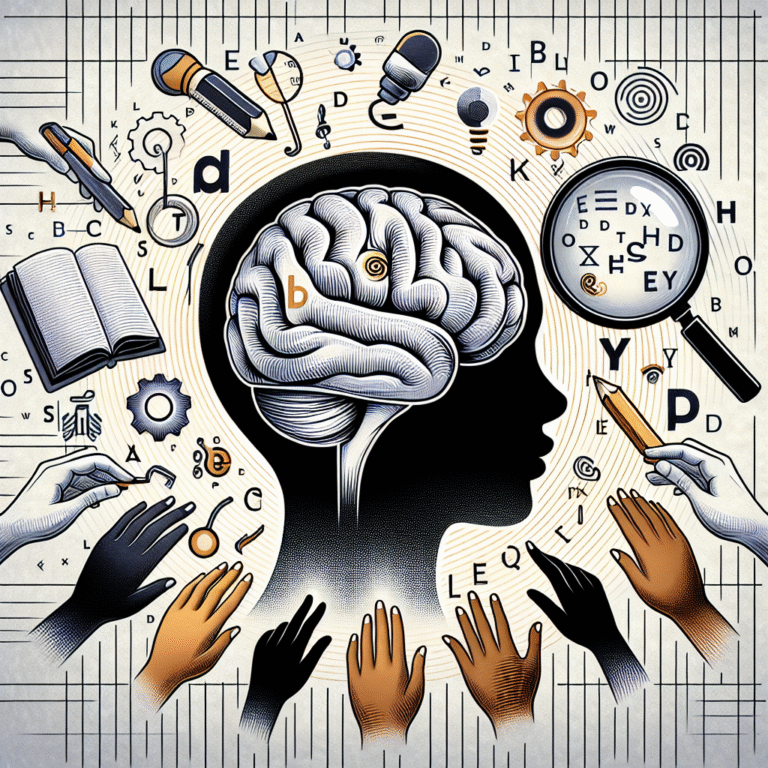Breaking Barriers: Understanding the Impact of Learning Disabilities on Language Development
Introduction
In a world where language serves as a bridge to connect ideas, cultures, and emotions, the challenges posed by learning disabilities can feel overwhelming. Yet, these barriers are not insurmountable. Breaking Barriers: Understanding the Impact of Learning Disabilities on Language Development is crucial not only for individuals struggling with these challenges but also for educators, parents, and peers who wish to foster an inclusive environment. This article delves into the complexities of learning disabilities, explores their effects on language development, and highlights innovative strategies that break down barriers for learners of all ages.
Defining Learning Disabilities
Learning disabilities are neurologically-based processing issues that affect the way individuals access and interact with information. They can manifest in various forms, such as dyslexia, dyscalculia, and dysgraphia. Each type of learning disability has its unique set of challenges and implications, particularly when it comes to language development.
| Table 1: Types of Learning Disabilities | Type | Description |
|---|---|---|
| Dyslexia | Affects reading and language processing. | |
| Dyscalculia | Impacts mathematical problem solving and number understanding. | |
| Dysgraphia | Challenges with handwriting and written expression. |
The Connection Between Learning Disabilities and Language Development
Language development is a multifaceted process, encompassing vocabulary acquisition, grammar comprehension, speech clarity, and narrative skills. Children with learning disabilities often face hurdles in these areas, affecting their overall communication skills. Breaking Barriers: Understanding the Impact of Learning Disabilities on Language Development involves recognizing how these disabilities can hinder language acquisition.
Research indicates that early intervention can significantly alter outcomes for children with learning disabilities. For instance, children diagnosed with dyslexia, a common learning disability affecting reading, often struggle with phonemic awareness—the ability to identify and manipulate sounds in words. This challenge can delay vocabulary growth and comprehension skills, leading to long-term impacts on academic performance and social interaction.
Real-World Case Studies
Case Study 1: Maria’s Journey with Dyslexia
Maria, a third-grader diagnosed with dyslexia, struggled with reading fluency. After receiving targeted interventions, including phonics-based instruction, she showed remarkable progress. Over a year, her reading level improved, and she became more confident in her ability to communicate. This transformation highlights the importance of tailored strategies in breaking down barriers for learners with dyslexia.
Analysis:
Maria’s success illustrates that personalized educational support can profoundly impact language development. As we examine such cases, it’s essential to understand the role of dedicated teachers and comprehensive resources in fostering success.
Case Study 2: Tim’s Experience with Dyscalculia
Tim, a fifth-grader with dyscalculia, faced challenges with math language, such as understanding terms like "sum" and "difference." His teacher implemented visual aids and hands-on activities, which helped him relate mathematical concepts to real-world scenarios. His confidence soared as he began to verbalize mathematical problems in ways he understood.
Analysis:
Tim’s story emphasizes that language development in mathematics is as critical as reading and writing, and that effective teaching strategies can mitigate the impacts of learning disabilities.
The Role of Educators and Parents
Creating a Supportive Learning Environment
Breaking barriers begins at home and in the classroom. Parents and educators must collaborate to create an environment that nurtures language development for children with learning disabilities. Here are some strategies to consider:
- Open Communication: Encourage dialogue between children and adults. Let children express their difficulties without fear of judgment.
- Multisensory Approaches: Incorporate various learning modalities—visual, auditory, and kinesthetic—to reinforce language concepts.
- Regular Feedback: Provide constructive feedback that focuses on progress and encourages further learning.
Engaging Resources and Tools
Utilizing assistive technology and educational software can aid children with learning disabilities. Text-to-speech programs, graphic organizers, and language apps can be valuable assets in breaking barriers and enhancing language skills.
The Importance of Early Intervention
Research underscores the significance of early diagnosis and intervention in addressing learning disabilities. The earlier children receive support, the better their chances for improved language outcomes.
| Chart 1: Impact of Early Intervention on Language Development | Age of Intervention | Percentage Improvement in Language Skills |
|---|---|---|
| 3-5 Years | 70% | |
| 6-8 Years | 50% | |
| 9-12 Years | 30% |
Engaging the Community
Communities can play a pivotal role in advocating for children with learning disabilities. Awareness programs, workshops, and support groups can offer parents and educators the tools they need to truly understand the impact of these disabilities on language development.
The Power of Individualized Education Plans (IEPs)
Crafting Effective IEPs
An Individualized Education Plan (IEP) outlines specific educational goals tailored to a student’s unique needs. This legal document is vital in ensuring that children with learning disabilities receive the educational support necessary to thrive.
Key Components of an IEP:
- Current Performance Levels: Assessments to establish a baseline for language skills.
- Specific Goals: Measurable and achievable language development objectives.
- Teaching Strategies: Techniques best suited to the student’s learning style.
Case Study 3: David’s IEP Success
David, a sixth-grader with a language processing disorder, saw a significant improvement in his communication skills after his IEP was set in motion. His plan included one-on-one speech therapy sessions and integrated language-building activities in his general education classes.
Analysis:
David’s story showcases the positive outcomes of having a structured plan, emphasizing how Breaking Barriers: Understanding the Impact of Learning Disabilities on Language Development can lead to remarkable success.
The Role of Technology in Language Development
Advancements in technology have opened new avenues for supporting children with learning disabilities. Digital tools can break down barriers and provide alternative pathways for language acquisition:
- Interactive Apps: Platforms that encourage speech and language practice through gamification.
- Speech Recognition Software: Applications that help children articulate their thoughts and improve writing skills.
- Online Tutoring: Virtual sessions can offer personalized support tailored to the child’s pace and style.
Conclusion
Understanding the profound impact of learning disabilities on language development is crucial in breaking down societal barriers. Through research, real-world case studies, and a commitment to early intervention and personalized education, we can foster inclusive environments that empower all learners.
The journey to understanding and supporting individuals with learning disabilities is ongoing, but with collective effort and innovative strategies, we find strengths in differences and celebrate successes, big and small.
Inspiring Takeaway
In the quest to break barriers, remember that every child has the potential to thrive. By equipping ourselves with knowledge and resources, we can help pave the way for successful language development, ensuring that fairness and inclusion are not just ideals, but realities.
FAQs
-
What are the most common types of learning disabilities?
- The most common types include dyslexia, dysgraphia, and dyscalculia.
-
What signs might indicate my child has a learning disability?
- Signs may include difficulty in reading, writing, or mathematical tasks, as well as problems with memory and organization.
-
How can I support my child at home?
- Encourage open dialogue, use multisensory methods for learning, and provide a conducive learning environment.
-
What technology can aid my child with language development?
- Various apps and tools, such as text-to-speech software and educational games, can be highly beneficial.
- How can schools better support students with learning disabilities?
- Schools can implement individualized education plans, provide specialized resources, and foster a culture of inclusion.
By remaining committed to the quest of Breaking Barriers: Understanding the Impact of Learning Disabilities on Language Development, we ensure that every child’s voice is heard and valued. Embrace the journey of learning, and together, we can shape a brighter future!
















